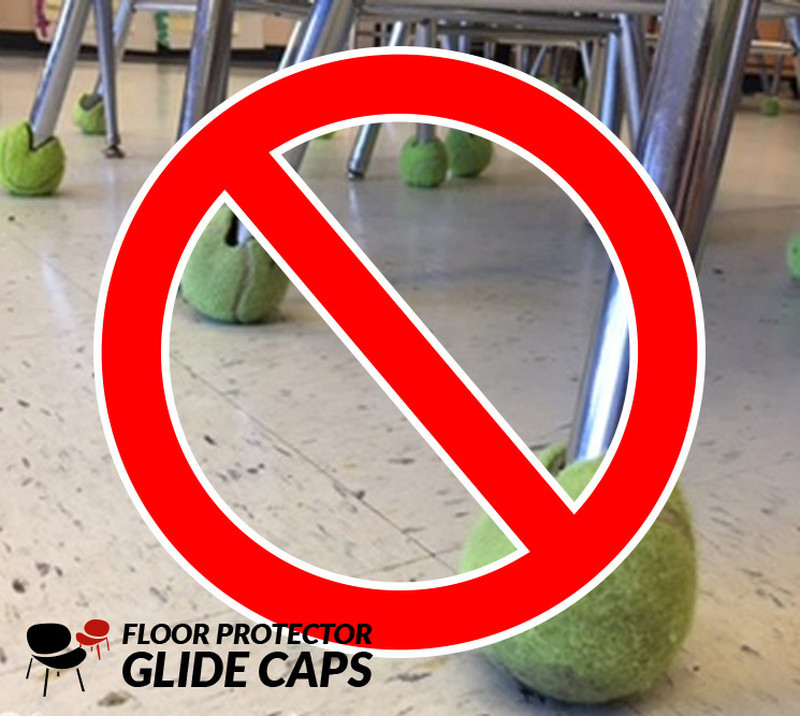Using tennis balls as chair caps may not be the best choice for students, teachers and principals. This may seem like a quick and easy solution to noisy chairs in the classroom. For years, putting tennis balls on the bottoms of school chairs has become popular, even customary, but there are potential health risks associated with this convention.
Tennis balls are produced and manufactured with natural rubber latex bladders which become abraded when used as floor protection on chair legs. Using tennis balls for this reason can produce latex dust in schools’ indoor air. Some students and individuals are highly allergic to latex.
Our children, to most of us, are the most important things in our busy lives. Many have to spend an average of 8 hours per day, 5 days a week in school and, during those thousands of hours, we assume them to be breathing healthy air. The EPA (Environmental Protection Agency) has reported that indoor air contains 2-5 times more pollutants than outdoor.
The Massachusetts Department of Public Health labels tennis balls as a source of indoor air pollutants in their August 2006 report “Indoor Air Quality Testing - Pediatric Asthma Surveillance in Massachusetts Public Schools”.
So why should you buy our product? I was just getting to that… At LCS Products, we don’t just make quality chair caps, we also make sure they are long-lasting, easy to use and safe for your children and teachers. Our caps are made with a polymer, polypropylene and polyethylene, that is anti-corrosive and impervious to water and mold with zero VOC (Volatile Organic Compounds). Our caps are manufactured with the same superior material used to construct water bottles, and is used in both the food and medical industries.
Using our caps will keep the air cleaner, the noise level to an extreme low, and may even be a healthier choice for some students and teachers.
For more information visit our website at chaircaps.com or call us at 561-775-2122.
This blog has been updated: 03-24-2022

